As the end of 2015 approaches I am offering my entire store at 20% off of every product!
Stop on by and enjoy great savings on everything including bundles like the one shown below!
Bundle #3 Real Image Customer Service Bundle

Monday, December 28, 2015
Wednesday, December 23, 2015
Friday, December 11, 2015
Christmas Sale
Just checking in to say hello and to let you know I appreciate you stopping by to check out my blog!
I also want to let you know that I am offering 20% off my entire store as a special holiday thank you.
Sale runs December 11th-13th so stop on by and enjoy great savings!! Thank you!!
Adaptive Tasks by Dianne Matthews
I also want to let you know that I am offering 20% off my entire store as a special holiday thank you.
Sale runs December 11th-13th so stop on by and enjoy great savings!! Thank you!!
Adaptive Tasks by Dianne Matthews
Monday, November 23, 2015
Illustrations Bring Books To Life
If you place books in a literacy center and students go to make choices, which ones do you think they like the most? Books with words only or eye catching illustrated books?
Children are drawn to eye catching images which peak their interest to know more about the image themselves. Providing both written work with colorful images is what helps to encourage literacy skills and comprehension.
When you connect the image to what is written it makes the book more real to them and stimulates their imagination. Pictures help to increase vocabulary as well as identifying such things as shapes, colors, names, and objects.
Image books are not only helpful for early learning, they serve great value with higher levels of education as well. As students get older chapter books are encouraged for academics and education goals but having a mix of reading choices helps to encourage students who may not like to read or are stimulated to read more because of visuals.
Mary Jo Fresch, a professor at Ohio Sate University stated, "Not everything is in the picture and not everything is in the words. It takes some real critical thinking to use a picture book." I truly believe this and this concept should be encouraged. Pictures help people of all ages recall memories and experiences that help to encourage social skills and helps to increase reading comprehension.
Let's keep the passion for reading alive!
Here is one of my latest products for early education that is full of colorful images to share with students about that first trip to the dentist. By reading it during group time it will encourage conversation about students personal experiences at the dentist.
Your Teeth and How to Care for Them
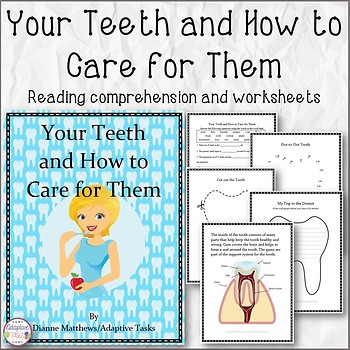
Children are drawn to eye catching images which peak their interest to know more about the image themselves. Providing both written work with colorful images is what helps to encourage literacy skills and comprehension.
When you connect the image to what is written it makes the book more real to them and stimulates their imagination. Pictures help to increase vocabulary as well as identifying such things as shapes, colors, names, and objects.
Image books are not only helpful for early learning, they serve great value with higher levels of education as well. As students get older chapter books are encouraged for academics and education goals but having a mix of reading choices helps to encourage students who may not like to read or are stimulated to read more because of visuals.
Mary Jo Fresch, a professor at Ohio Sate University stated, "Not everything is in the picture and not everything is in the words. It takes some real critical thinking to use a picture book." I truly believe this and this concept should be encouraged. Pictures help people of all ages recall memories and experiences that help to encourage social skills and helps to increase reading comprehension.
Let's keep the passion for reading alive!
Here is one of my latest products for early education that is full of colorful images to share with students about that first trip to the dentist. By reading it during group time it will encourage conversation about students personal experiences at the dentist.
Your Teeth and How to Care for Them

Wednesday, October 28, 2015
Crafty Fall Fun
Fall is my favorite season. I enjoy the colors of the leaves, smell of warm spices and the flavor of pumpkin recipes galore! I also love finding crafty ideals that kids will have fun with and keeps the fall season alive!
This sun catcher craft is a nice way to present the colors of fall and shaping them in to leaf form reminds us of the first signs and a way to keep fall alive.

Click on the link above to see a nice tutorial on how to make these crafty sun catchers!
This sun catcher craft is a nice way to present the colors of fall and shaping them in to leaf form reminds us of the first signs and a way to keep fall alive.
Click on the link above to see a nice tutorial on how to make these crafty sun catchers!
Wednesday, October 14, 2015
Including Special Needs During the Holidays
Holidays are times where families enjoy spending time together and the traditions surrounding the holidays. It is important to include each member of the family in creating memorable moments especially if a member of the family has a disability or special needs. It is important to find ways to help everyone connect so know one feels uncomfortable or left out. Sometimes those with special needs receive more attention and their siblings feel left out and sometimes those with special needs are left out of preparation or traditions because of their disability.
Coming together to make everyone a part of the holiday will help everyone to bond and enjoy some very special moments together. Here are some great tips for including family special needs:
"Tips for Developing Traditions with Special Needs Children:
*When planning a meal for a child with food allergies or other special diet needs, try to offer several choices of special foods if possible and serve the special foods in festive dishes so the food is seen as special too.
*Share special family stories and memories, and be sure to include the special needs child as well as others.
*If your child has difficulty sharing stories because of language issues, allow him to show pictures of happy events or times that were special for him.
*Have each person share something they are thankful for, or share something they appreciate about the family.
*Read stories about the holiday together. Choose books with illustrations and words that your special needs child can understand.
*Be sure to take pictures of everyone, and display them for everyone to see. After the celebration, help family members place photos in scrapbooks.
*Include your children in decorating for the holiday. Provide your child with some appropriate choices for decoration, and allow her to choose what to display and where. The holidays are such a special time, creating family memories and traditions which will stay with your special-needs children the rest of their lives.
*Allow your child to participate in food preparation, setting the table, and clean up as her ability levels allow.
*Include your child in making invitations and sending thank you notes. If your child has writing difficulty, allow him to use stamps, color designs or images, or decorate with embellishments that are appropriate for his age and developmental level.
*Keep realistic behavior expectations, and plan alternative activities for your child when she needs a break from others. Know your child's limits, and ensure adequate nap time or time away from the noise and stimulation that sometimes comes at family gatherings.
*Family traditions are things that families do together on a regular basis. These things can be patterns of behavior, enjoyable activities or a certain food that a family likes. It is important for families to observe their traditions even as their children get older.
Here is my latest product that helps students in the classroom learn about traditional Thanksgiving foods and matching meals for serving.
https://www.teacherspayteachers.com/Product/Thanksgiving-Dinner-Meal-Serving-Life-Skill-Task-2146081
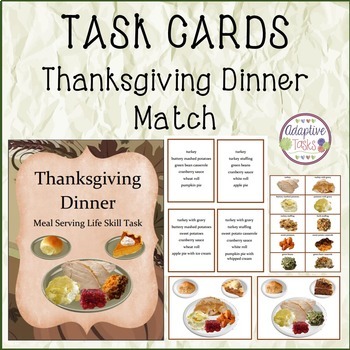
Coming together to make everyone a part of the holiday will help everyone to bond and enjoy some very special moments together. Here are some great tips for including family special needs:
"Tips for Developing Traditions with Special Needs Children:
*When planning a meal for a child with food allergies or other special diet needs, try to offer several choices of special foods if possible and serve the special foods in festive dishes so the food is seen as special too.
*Share special family stories and memories, and be sure to include the special needs child as well as others.
*If your child has difficulty sharing stories because of language issues, allow him to show pictures of happy events or times that were special for him.
*Have each person share something they are thankful for, or share something they appreciate about the family.
*Read stories about the holiday together. Choose books with illustrations and words that your special needs child can understand.
*Be sure to take pictures of everyone, and display them for everyone to see. After the celebration, help family members place photos in scrapbooks.
*Include your children in decorating for the holiday. Provide your child with some appropriate choices for decoration, and allow her to choose what to display and where. The holidays are such a special time, creating family memories and traditions which will stay with your special-needs children the rest of their lives.
*Allow your child to participate in food preparation, setting the table, and clean up as her ability levels allow.
*Include your child in making invitations and sending thank you notes. If your child has writing difficulty, allow him to use stamps, color designs or images, or decorate with embellishments that are appropriate for his age and developmental level.
*Keep realistic behavior expectations, and plan alternative activities for your child when she needs a break from others. Know your child's limits, and ensure adequate nap time or time away from the noise and stimulation that sometimes comes at family gatherings.
*Family traditions are things that families do together on a regular basis. These things can be patterns of behavior, enjoyable activities or a certain food that a family likes. It is important for families to observe their traditions even as their children get older.
Here is my latest product that helps students in the classroom learn about traditional Thanksgiving foods and matching meals for serving.
https://www.teacherspayteachers.com/Product/Thanksgiving-Dinner-Meal-Serving-Life-Skill-Task-2146081

Tuesday, June 30, 2015
Importance of Dramatic Play in the Learning Process
Dramatic play is such a vital part of a child's learning process. Through dramatic play, young children up to students of all ages with special needs enhance their development in major areas such as language, social/emotional, cognitive, and physical skills.
Incorporating dramatic play into the school day can be as simply offering a play area that is open for children to actively initiate play with materials provided to spark their imagination, and it can be done by incorporating materials for dramatic play that correspond with lesson plans and themes.
Below are three of my newest products that work well to develop the major areas as listed above. Children learn to be social, follow direction, incorporate math skills, and learn valuable life and vocational skills as well.
These products work well for food theme, cooking, community service, etc...
Seafood Restaurant
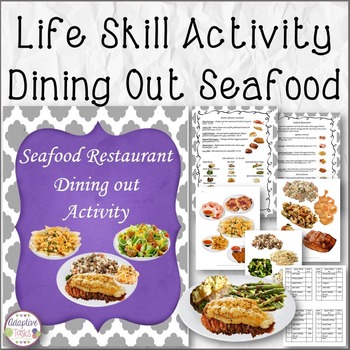
Italian Restaurant

Mexican Restaurant
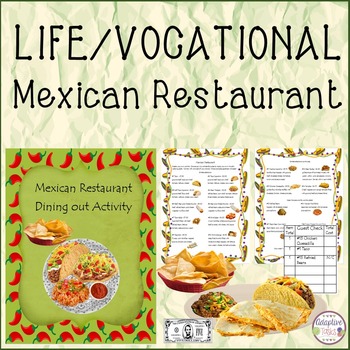
Incorporating dramatic play into the school day can be as simply offering a play area that is open for children to actively initiate play with materials provided to spark their imagination, and it can be done by incorporating materials for dramatic play that correspond with lesson plans and themes.
Below are three of my newest products that work well to develop the major areas as listed above. Children learn to be social, follow direction, incorporate math skills, and learn valuable life and vocational skills as well.
These products work well for food theme, cooking, community service, etc...
Seafood Restaurant

Italian Restaurant

Mexican Restaurant

Monday, June 15, 2015
Reinforcement Tasks Used In Various Environments
Making tasks and activities to meet the needs of students of various age and ability is what I enjoy doing. I make products to reinforce learning in the early education, home school, and special need classrooms but never thought of uses beyond these settings until a customer of mine enlightened me.
I make a variety of tasks to include English language arts, functional curriculum, life skills and vocational skills. I found out that they are working well in rehab of a skilled nursing facility! I never really thought of this environment and the importance of the need for these types of tasks when working with speech and occupational therapy.
I will continue making tasks to meet needs in all of these environments and am now inspired to create things that will meet the needs of rehabilitation teams that work with guests individual needs.
Here is a sample of tasks that help with life skills including laundry, categorizing products, and meal presentation/food recognition:
Life Skill Bundle #4
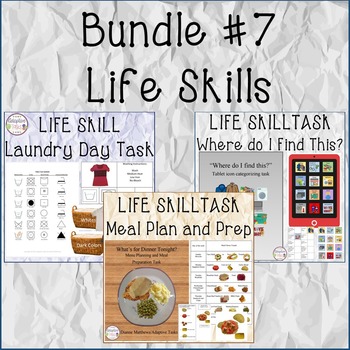
I make a variety of tasks to include English language arts, functional curriculum, life skills and vocational skills. I found out that they are working well in rehab of a skilled nursing facility! I never really thought of this environment and the importance of the need for these types of tasks when working with speech and occupational therapy.
I will continue making tasks to meet needs in all of these environments and am now inspired to create things that will meet the needs of rehabilitation teams that work with guests individual needs.
Here is a sample of tasks that help with life skills including laundry, categorizing products, and meal presentation/food recognition:
Life Skill Bundle #4

Thursday, March 26, 2015
PVC Pattern Task
One of the popular tasks in our classroom is our PVC Pattern Tasks. I was recently asked if I could provide images of the patterns we use so I decided to make not only the images available but a list of the parts needed for each pattern.
These are fun patterns to put together and have various challenging levels. To provide the task for our classroom, I went to a local building supply store and told them what I was looking for and what the task was for and they gave me all parts for FREE!
All pipe and fittings are 1" with the pipe being cut down to size using pipe cutters.
PVC Patterns
These are fun patterns to put together and have various challenging levels. To provide the task for our classroom, I went to a local building supply store and told them what I was looking for and what the task was for and they gave me all parts for FREE!
All pipe and fittings are 1" with the pipe being cut down to size using pipe cutters.
PVC Patterns
Sunday, March 1, 2015
Mastering a Skill and the Importance of Generalization
Many of us that work with students with special needs have our moment of excitement when we see a student master a skill, but to truly be excited is when we see them using this new skill in other areas of their learning and daily routines at school and home.
To help students maintain a new skill, teachers need to introduce the new skill in other ways along with varying the time of day. For example, if a student learns to master adding currency, have the student practice this skill by role playing a real situation...making purchases so they can practice their new skill.
It is also important to offer variety and to keep data so that you can track students progress.
Here is a FREE Data Collection sheet that I offer at my store that you can label and track your own students' tasks and progression.
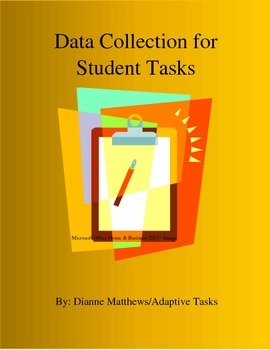
If you are interested in a variety of tasks that work well with basic common core standards, life skills, and vocational skills, then I invite you to check out my store. I carry a variety of tasks to meet multiple needs like this one: Grocery Shopping with Coupons
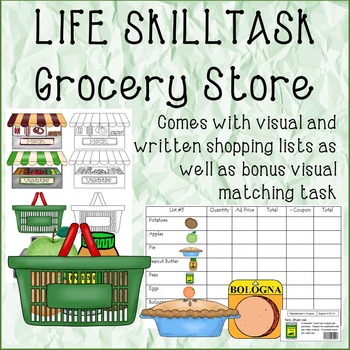
Students learn savings using coupons, finding products to match lists, count out change, etc...
If student has not mastered all the concepts, keep a record using data sheet to record progress with each attempt of the task. This is a great life skill task that parents can reinforce at home to help their child learn shopping, finding prices, etc...
The important thing to remember is to not only teach students to master tasks but to also generalize it in order to maintain what they have learned.
To help students maintain a new skill, teachers need to introduce the new skill in other ways along with varying the time of day. For example, if a student learns to master adding currency, have the student practice this skill by role playing a real situation...making purchases so they can practice their new skill.
It is also important to offer variety and to keep data so that you can track students progress.
Here is a FREE Data Collection sheet that I offer at my store that you can label and track your own students' tasks and progression.

If you are interested in a variety of tasks that work well with basic common core standards, life skills, and vocational skills, then I invite you to check out my store. I carry a variety of tasks to meet multiple needs like this one: Grocery Shopping with Coupons

Students learn savings using coupons, finding products to match lists, count out change, etc...
If student has not mastered all the concepts, keep a record using data sheet to record progress with each attempt of the task. This is a great life skill task that parents can reinforce at home to help their child learn shopping, finding prices, etc...
The important thing to remember is to not only teach students to master tasks but to also generalize it in order to maintain what they have learned.
Thursday, February 26, 2015
Fun Spring Treat!
I am always in search of fun hands on ideas and tasty treats to go along with lessons and this one looks like a keeper!
Marshmallow Rainbow Kabobs

A great springtime lesson would be to talk about the weather changes and how much rainfall there is during this season. Of course storms are often times followed up with a beautiful rainbow. After lesson have the students build their own marshmallow rainbow for a tasty treat!
The visual above and instructions on how to make the kabobs can be accessed The Decorated Cookie blog.
*Tip-if you do not want to use the sugar suggested above you can use different flavors of jello. Place jello flavors in different sandwich bags for each color. Also provide a bowl of water for each jello flavor you are using. After coating the marshmallow in water, shake off the access water then place in baggie and shake. When you remove marshmallow from bag you might stain your fingers so you will want to use gloves during this process.
Marshmallow Rainbow Kabobs
A great springtime lesson would be to talk about the weather changes and how much rainfall there is during this season. Of course storms are often times followed up with a beautiful rainbow. After lesson have the students build their own marshmallow rainbow for a tasty treat!
The visual above and instructions on how to make the kabobs can be accessed The Decorated Cookie blog.
*Tip-if you do not want to use the sugar suggested above you can use different flavors of jello. Place jello flavors in different sandwich bags for each color. Also provide a bowl of water for each jello flavor you are using. After coating the marshmallow in water, shake off the access water then place in baggie and shake. When you remove marshmallow from bag you might stain your fingers so you will want to use gloves during this process.
Sunday, February 8, 2015
Valentine's Day Creations
What a fun week leading up to Valentine's Day!
In our life skills classroom we plan on doing some crafting and fixing a special lunch, with all students helping of course! There are so many wonderful TpT resources available to stay with the valentine theme. Here are pages of items to look through. Here is one of my FREE products for some Valentine's Day fun!
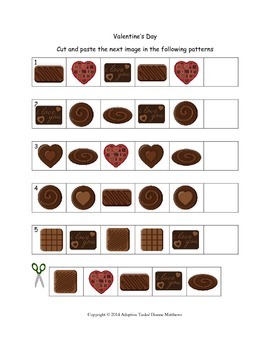
On Pinterest I found some very cute ideas as well that include the following:

http://thecraftingchicks.com/2014/01/extra-awesome-valentine-free-printable.html

http://www.modernparentsmessykids.com/2014/01/3-healthy-strawberry-snacks-for-valentines-day.html

http://3garlandgirls.blogspot.com/2013/02/happy-valentines-day.html

http://www.oneartsymama.com/2014/01/valentine-mailbox.html
For more great ideas from crafting to food, here is a great board of ideas from Pinterest.
Valentine's Day Projects
Enjoy!!
In our life skills classroom we plan on doing some crafting and fixing a special lunch, with all students helping of course! There are so many wonderful TpT resources available to stay with the valentine theme. Here are pages of items to look through. Here is one of my FREE products for some Valentine's Day fun!

On Pinterest I found some very cute ideas as well that include the following:
http://thecraftingchicks.com/2014/01/extra-awesome-valentine-free-printable.html
http://www.modernparentsmessykids.com/2014/01/3-healthy-strawberry-snacks-for-valentines-day.html

http://3garlandgirls.blogspot.com/2013/02/happy-valentines-day.html
http://www.oneartsymama.com/2014/01/valentine-mailbox.html
For more great ideas from crafting to food, here is a great board of ideas from Pinterest.
Valentine's Day Projects
Enjoy!!
Sunday, February 1, 2015
PVC Pipe in the Classroom
I absolutely love to find and create multiple uses for products that some people think of as only what the product is intended for. One such product is PVC pipe and fittings.
PVC is one of the most popular products to use in the home for plumbing solutions but there are so many things you can create to benefit your classroom.
As I was building up our arsenal of task products to fill our shelves, I asked my husband to create some PVC pattern designs which I took pictures of to give the students a pattern to follow. Example of our product below,

The students love to recreate the patterns and like how they become more challenging. We also have some students that like to try creating their own pattern that we take pictures of so other students can try to recreate their design. This is just one of the many uses for PVC in the classroom. The nice thing is that I went to the local building store and told them what I was using the products for and they graciously gave me the materials shown in the box for FREE!!
Here are just a few images of ideas you could do from helping create student aids to organization.
PVC is one of the most popular products to use in the home for plumbing solutions but there are so many things you can create to benefit your classroom.
As I was building up our arsenal of task products to fill our shelves, I asked my husband to create some PVC pattern designs which I took pictures of to give the students a pattern to follow. Example of our product below,

The students love to recreate the patterns and like how they become more challenging. We also have some students that like to try creating their own pattern that we take pictures of so other students can try to recreate their design. This is just one of the many uses for PVC in the classroom. The nice thing is that I went to the local building store and told them what I was using the products for and they graciously gave me the materials shown in the box for FREE!!
Here are just a few images of ideas you could do from helping create student aids to organization.
Saturday, January 24, 2015
Teaching in a Multi-Learning Level Classroom
Having a multi-level learning classroom can present many challenges. To teach effectively in this environment it is important to design instruction to meet the individual needs of each student.
One of the issues in some of today's classrooms is the use of standardized teaching which basically teaches all students in a particular grade at the same grade level when in reality there can be up to a 6 grade difference within the class. It is important to embrace these differences and design instruction to meet the multiple learning levels in a way to help each student progress to the next level. This is no easy task! It takes a lot of planning and collaboration with team teachers and paraprofessionals.
I work in a multi-learning classroom and we structure our teaching in a way that embraces the differences in each of our students. As a para I work closely with the teacher to help meet each of the students needs. We teach the basic core subjects that include English, math, social studies, and science. Along with this we also teach life skills and pre-vocational skills.
During our core subject blocks we begin with an introduction to a themed unit and during that time allow for some group discussion about their personal experiences. For example we had a unit in science about outdoor life. This unit included nature and outdoor living. We opened up each science block with a topic story that involved comprehension questions to answer. Because of the different learning levels we answer the questions together as a group.
After the opening introduction to the topic. We allow time for students to share experiences that relate to the topic. This helps the students to be engaged in their learning and shows how the topic relates to real life experiences.
To finish our block we provide individualized time for each student to engage in a task about the topic that helps them to learn more about it. With our higher functioning students this may be working in pairs to research via internet or possible scavenger hunt questions related to the topic, and our lower functioning that may need to work on writing or visual skills can work on individual tasks that relate to the topic such as putting sentence strips in order from the story via cut-and-paste or work box tasks that relate to the topic itself.
The most important thing is to make sure you are meeting each students individual needs and helping them to progress to the next level of learning. Like I said, this is no easy task and takes lots of planning but the end reward is great when the students are engaged and showing progress!
To see one of our classroom tasks that some of our students use that relates to outdoor living, go to my Task Tips page and check out the Ready to Camp Life/Vocational Task This is a task that is adaptable to various learning levels and skills.
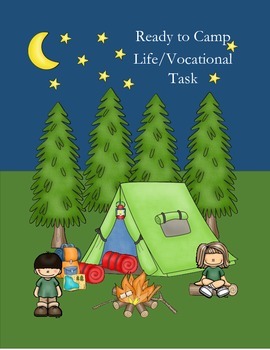
One of the issues in some of today's classrooms is the use of standardized teaching which basically teaches all students in a particular grade at the same grade level when in reality there can be up to a 6 grade difference within the class. It is important to embrace these differences and design instruction to meet the multiple learning levels in a way to help each student progress to the next level. This is no easy task! It takes a lot of planning and collaboration with team teachers and paraprofessionals.
I work in a multi-learning classroom and we structure our teaching in a way that embraces the differences in each of our students. As a para I work closely with the teacher to help meet each of the students needs. We teach the basic core subjects that include English, math, social studies, and science. Along with this we also teach life skills and pre-vocational skills.
During our core subject blocks we begin with an introduction to a themed unit and during that time allow for some group discussion about their personal experiences. For example we had a unit in science about outdoor life. This unit included nature and outdoor living. We opened up each science block with a topic story that involved comprehension questions to answer. Because of the different learning levels we answer the questions together as a group.
After the opening introduction to the topic. We allow time for students to share experiences that relate to the topic. This helps the students to be engaged in their learning and shows how the topic relates to real life experiences.
To finish our block we provide individualized time for each student to engage in a task about the topic that helps them to learn more about it. With our higher functioning students this may be working in pairs to research via internet or possible scavenger hunt questions related to the topic, and our lower functioning that may need to work on writing or visual skills can work on individual tasks that relate to the topic such as putting sentence strips in order from the story via cut-and-paste or work box tasks that relate to the topic itself.
The most important thing is to make sure you are meeting each students individual needs and helping them to progress to the next level of learning. Like I said, this is no easy task and takes lots of planning but the end reward is great when the students are engaged and showing progress!
To see one of our classroom tasks that some of our students use that relates to outdoor living, go to my Task Tips page and check out the Ready to Camp Life/Vocational Task This is a task that is adaptable to various learning levels and skills.

Thursday, January 15, 2015
The Benefits of Work Box Tasks for All Students
Work box tasks are beneficial in many ways for all students. They are not only used to help individual students meet IEP goals, they can also be used to help reinforce a concept taught in the classroom.
All core subject areas are presented by teachers in various teaching methods to accommodate the needs of all students. Where work box tasks can be beneficial is in the area of reinforcing the key concepts that the students have been taught.
For example:
The teacher may be doing a lesson on interrogative questions...who, what, when, where, why.
While some students may clearly grasp the concept of asking informative based questions, others may need further help and visuals to increase their understanding.
This Who? What? Where? task is an example of a resource that can help reinforce this concept:

I encourage you to browse my store and look at the many tasks that can be used to reinforce money skills, spelling, addition, subtraction, map skills, life skills, vocational skills, etc...
All core subject areas are presented by teachers in various teaching methods to accommodate the needs of all students. Where work box tasks can be beneficial is in the area of reinforcing the key concepts that the students have been taught.
For example:
The teacher may be doing a lesson on interrogative questions...who, what, when, where, why.
While some students may clearly grasp the concept of asking informative based questions, others may need further help and visuals to increase their understanding.
This Who? What? Where? task is an example of a resource that can help reinforce this concept:
I encourage you to browse my store and look at the many tasks that can be used to reinforce money skills, spelling, addition, subtraction, map skills, life skills, vocational skills, etc...
Sunday, January 4, 2015
Subscribe to:
Comments (Atom)





